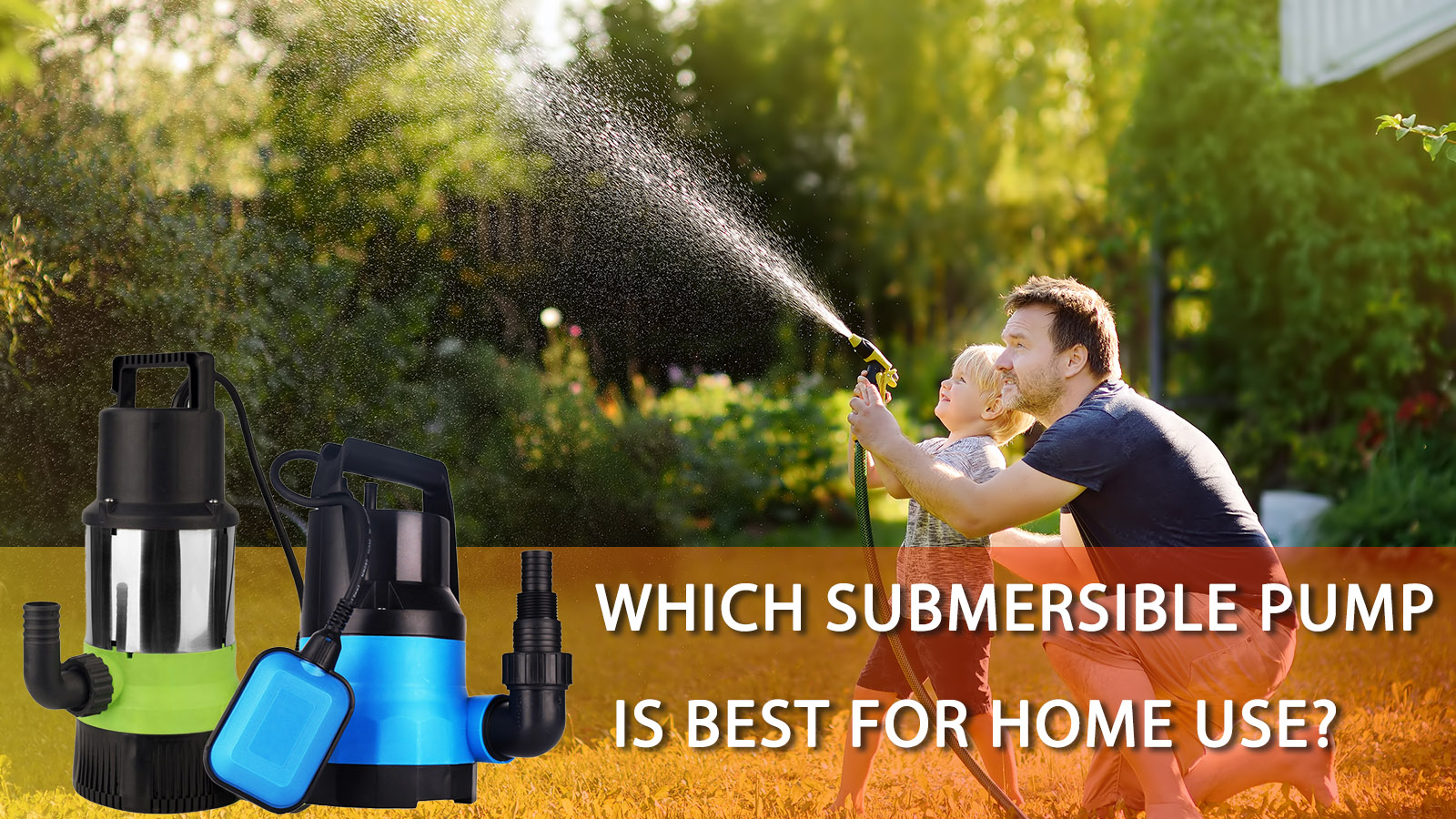+86 13816508465
Pump Knowledge
Apr. 23, 2025

A Simple Guide for Homeowners and Beginners
Submersible pumps are powerful tools designed to operate while completely submerged in water. Whether you’re drawing water from a well, draining a flooded basement, or keeping your garden lush, submersible pumps can make everyday home water management effortless. But with so many options available, how do you know which one is best for your needs?
Let's break it down.
What is a Submersible Pump?
A submersible pump is a type of electric water pump that functions entirely underwater. Unlike surface pumps, which pull water from above, submersible pumps push water to the surface from below. This makes them highly efficient and suitable for deep or flooded environments.
Common Home Uses of Submersible Pumps
Submersible pumps are widely used in household settings. Here are some typical applications:
Well Water Supply: Pumps installed in deep wells to supply clean water for drinking, washing, or bathing.
Basement Flooding: Draining accumulated rainwater or groundwater from basements.
Garden Irrigation: Watering lawns, flowers, or vegetable gardens.
Water Transfer: Moving water from one tank or reservoir to another.
Sewage and Grey Water: Handling waste or semi-solid water in off-grid homes.
Key Factors to Consider When Choosing a Submersible Pump
1. Flow Rate (L/min or GPM)
Indicates how much water the pump can move in a minute.
Garden watering: 30–60 L/min
House water supply: 60–100 L/min
Pool or basement draining: 100+ L/min
2. Maximum Head / Lift (meters or feet)
The vertical distance the pump can push water upward.
Garden and irrigation: 10–20 meters
Deep well supply: 40–70 meters or more
3. Water Type Compatibility
Clean Water: For clear water with no debris
Dirty Water: Contains small particles, sand, or leaves
Sewage Water: Contains waste and solids, requires special pumps
4. Material and Durability
Plastic Housing: Lightweight, suitable for light-duty use
Stainless Steel / Cast Iron: Heavy-duty, rust-resistant, long lifespan
5. Automatic Operation
Look for pumps with float switches for automatic start and stop based on water levels.
Types of Submersible Pumps for Home Use
1. Clean Water Pumps
Used for wells, tanks, or rainwater systems.
Advantages: Energy-efficient, quiet
Disadvantages: Can't handle debris
2. Dirty Water Pumps
Can pump water with small solids, perfect for draining basements or ponds.
Advantages: More Versatile
Disadvantages: Slightly higher energy usage
3. Sewage and Grinder Pumps
Designed for household waste systems, can handle solids and sludge.
Advantages: Ideal for off-grid systems
Disadvantages: Larger and more expensive
4. Deep Well Submersible Pumps
Multistage units are suitable for wells deeper than 10 meters.
Advantages: High lift, strong pressure
Disadvantages: Complex installation
Pros and Cons of Submersible Pumps for Home Use
Feature | Pros | Cons |
Fully Submerged | Quiet, saves space | More difficult to access for maintenance |
Energy Efficient | Less energy loss | May require correct sizing |
Versatile | Clean, dirty, and sewage use | Some models are expensive |
Maintenance Tips
Clean the pump's inlet screen regularly
Test the float switch monthly
Never let the pump run dry
Store the pump indoors if not frost-proof
Check for unusual noise, smell, or vibrations
Troubleshooting Common Issues
Pump doesn't start
Check the power supply and float switch
Weak water flow
The inlet might be clogged, or the head is too high
The pump turns off quickly
Maybe overheating or running dry
Loud noises
Could be debris inside or worn-out parts
Final Thoughts
The best submersible pump for home use depends on what you need it for. Clean water supply? Choose a slim, multistage pump. Need to drain a basement or pond? Go for a dirty water pump. Managing sewage in an off-grid system? A grinder or sewage pump is essential.
By understanding your water source, flow needs, and system depth, you can confidently choose the right submersible pump that keeps your home running smoothly.
Address
No.17 XeDa Jimei Ind. Park, Xiqing Economic Development Area, Tianjin, China
Telephone
+86 13816508465
QUICK LINKS